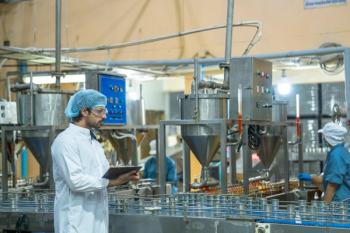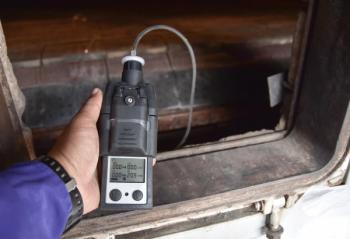
Fifty Years of SERS, The Milestones in Surface-Enhanced Raman Spectroscopy
Key Takeaways
- SERS development is categorized into discovery, downturn, nano-driven transformation, and modern resurgence phases, highlighting methodological innovations overcoming experimental challenges.
- Initial SERS breakthroughs in the 1970s revealed significant Raman signal enhancement, challenging established Raman theory and leading to new theoretical models.
A sweeping review, “Surface-Enhanced Raman Spectroscopy: A Half-Century Historical Perspective” traces the evolution of SERS from its foundational experiments in the 1970s through the nanoscience era and modern high-spatial-resolution techniques.
Introduction
In Surface-Enhanced Raman Spectroscopy: A Half-Century Historical Perspective, Yi and coauthors present a comprehensive narrative of surface enhanced Raman spectroscopy’s (SERS) development over fifty years (1). They organize the progression into four major phases—discovery, downturn, nano-driven transformation, and modern resurgence—and emphasize the methodological innovations that overcame long-standing experimental challenges. This publication represents a highly international collaboration spanning 47 institutions across 12 countries, with core leadership from Chinese universities (especially Xiamen and Hefei) and strong partnerships with UK, US, German, and Spanish research centers. With 646 references, this review (1) serves as both a historical record and a guide for future generations. It underscores how the field’s founding spirit—creativity, collaboration, and perseverance—remains vital in advancing next-generation molecular spectroscopy.
The Birth of SERS in Electrochemical Systems
The story begins in 1974, when Fleischmann, Hendra, and McQuillan at the University of Southampton first reported potential-dependent Raman spectra of pyridine adsorbed on a roughened silver electrode (2). Shortly after, Jeanmaire and Van Duyne at Northwestern University confirmed that the Raman cross-section of adsorbed pyridine was enhanced by several orders of magnitude (3), while Albrecht and Creighton at the University of Kent independently observed similar phenomena (4).
Van Duyne later introduced the term surface-enhanced Raman scattering to describe this newly recognized effect (1). The early data challenged established Raman theory, which had long assumed that molecular monolayers could not produce detectable scattering signals. As Moskovits soon clarified, the enhancement arose not from surface area alone but from the coupling of adsorbed molecules to localized surface plasmon resonances in roughened metal nanostructures (5).
Spectroscopic Insights and Mechanistic Advances
Yi and colleagues emphasize that quantitative calibration of enhancement factors was a decisive step in legitimizing SERS. Jeanmaire and Van Duyne developed a protocol comparing Raman intensities per molecule between surface-bound and solution-phase species, establishing signal enhancement factors of approximately 10⁵–10⁶ (3). These measurements anchored the emerging theoretical models and provided a reproducible framework for mechanistic studies.
Spectroscopic signatures—including frequency shifts, potential-dependent intensity variations, and the influence of resonance conditions—helped separate the electromagnetic (plasmonic) and charge-transfer (chemical) enhancement mechanisms (1). Over subsequent decades, improved modeling of plasmonic hot spots, molecular orientation, and non-local electron response refined our understanding of the SERS process (6).
Revival Through Nanoscience: TERS and SHINERS
After a lull from the mid-1980s to mid-1990s, advances in nanoscience reignited the field. Controlled synthesis of nanoparticles and nanostructured films enabled the deliberate creation of “hot spots” with highly confined electromagnetic fields (1). This breakthrough made single-molecule SERS achievable and dramatically extended analytical sensitivity.
Two major derivative techniques soon followed. Tip-enhanced Raman spectroscopy (TERS) combined scanning probe microscopy with Raman detection to surpass the diffraction limit, achieving nanoscale spatial resolution (1). Shell-isolated nanoparticle-enhanced Raman spectroscopy (SHINERS), developed by Tian and co-workers, employed inert shell-coated plasmonic nanoparticles to extend enhancement to non-plasmonic materials, such as oxides and semiconductors (7). These approaches collectively broadened SERS’s reach into catalysis, energy materials, and biosensing.
Reflections and Future Directions
Yi and coauthors conclude that SERS’s enduring success stems from the integration of experimental, theoretical, and instrumental innovation (1). The review underscores how persistence through early skepticism, coupled with the rise of nanotechnology, transformed SERS from a laboratory curiosity into a cornerstone analytical tool.
Looking ahead, the authors foresee that artificial intelligence and computational nanophotonics will enable predictive design of plasmonic structures, optimize signal reproducibility, and enhance chemical specificity (1). Fifty years after its accidental discovery, SERS remains one of the most striking examples of how interdisciplinary collaboration can redefine the limits of molecular spectroscopy.
References
(1) Yi, J.; You, E. M.; Hu, R.; Wu, D. Y.; Liu, G. K.; Yang, Z. L.; Zhang, H.; Gu, Y.; Wang, Y. H.; Wang, X.; Ma, H.; et al. Surface-Enhanced Raman Spectroscopy: A Half-Century Historical Perspective. Chem. Soc. Rev. 2025, 54, 1453–1551. DOI:
(2) Fleischmann, M.; Hendra, P. J.; McQuillan, A. J. Raman Spectra of Pyridine Adsorbed at a Silver Electrode. Chem. Phys. Lett. 1974, 26, 163–166. DOI:
(3) Jeanmaire, D. L.; Van Duyne, R. P. Surface Raman Spectroelectrochemistry. Part I. Heterocyclic, Aromatic, and Aliphatic Amines Adsorbed on the Anodized Silver Electrode. J. Electroanal. Chem. 1977, 84, 1–20. DOI:
(4) Albrecht, M. G.; Creighton, J. A. Anomalously Intense Raman Spectra of Pyridine at a Silver Electrode. J. Am. Chem. Soc. 1977, 99, 5215–5217. DOI:
(5) Moskovits, M. Surface Roughness and the Enhanced Intensity of Raman Scattering by Molecules Adsorbed on Metals. J. Chem. Phys. 1978, 69, 4159–4161. DOI:
(6) Campion, A.; Kambhampati, P. Surface-Enhanced Raman Scattering. Chem. Soc. Rev. 1998, 27, 241–250. DOI:
(7) Li, J. F.; Tian, Z. Q. Shell-Isolated Nanoparticle-Enhanced Raman Spectroscopy (SHINERS). In Frontiers of Surface-Enhanced Raman Scattering: Single Nanoparticles and Single Cells; Tian, Z. Q., Li, J. F., Yang, Z. L., Eds.; Wiley: Hoboken, NJ, 2014; pp 163–192. DOI:
Newsletter
Get essential updates on the latest spectroscopy technologies, regulatory standards, and best practices—subscribe today to Spectroscopy.





